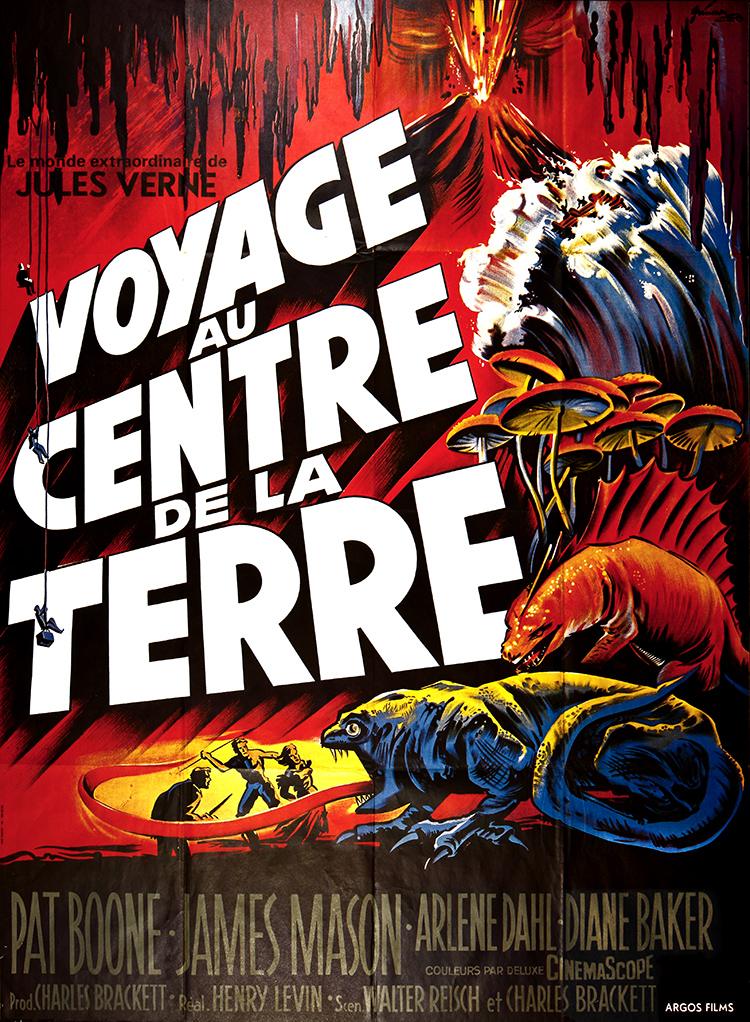From his first attempts at writing for the stage to the triumph of spectacular productions inspired by his novels, the theatre played a major role in Jules Verne’s life and work. In 1894, during an interview he granted to the English journalist Robert Sherard, the author stated, “I adored the stage and all connected with it and writing plays is still the work that gives me the most pleasure”.
Verne developed a passion for the theatre and began writing plays in 1848. His early works were inspired by such great names as Victor Hugo, Alexandre Dumas and William Shakespeare. The wordplays, mistaken identities, humour and hidden meanings in these youthful writings heralded the quality of the dialogue that would mark his Extraordinary Voyages.
After the literary success enjoyed by his first Voyages, Verne was eager to adapt some of his novels to the stage. To do so, he joined forces with the playwright Adolphe d’Ennery for the triumphant adaptations of Around the World in 80 Days (1874) and Michel Strogoff (1881), spectacular productions with magnificent stagings hailed as true extravaganzas. Despite its gorgeous sets, the adaptation of In Search of the Castaways (1878) enjoyed more limited success.
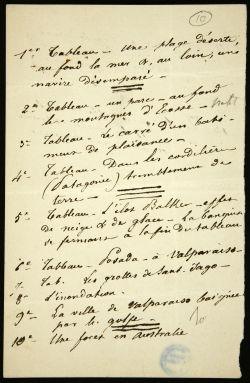
Adolphe d’Ennery
Handwritten letter, circa 1878
MJV B199 – Exhibition print
This five-act play, with prologue and 13 tableaus, was written by Jules Verne and Adolphe d’Ennery according to the novel In Search of the Castaways published in 1867-1868. The first took place on December 26, 1878, at Porte Saint-Martin theatre. The play was put on 112 times in total. From the 14 tableaus initially proposed here by Ennery, 13 were retained but with marked differences.
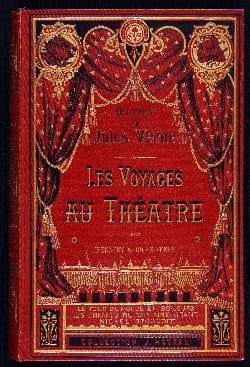
Jules Verne and Adolphe d’Ennery
The Voyages at the Theatre
Éditions Hetzel, Paris, 1881
MJV A2777
Adolphe d’Ennery wrote over 250 dramatic works. Jules Verne seems to have taken full advantage of his knowhow, as after Around the World in 80 Days, he collaborated with d’Ennery to bring In Search of the Castaways (1878) and Michel Strogoff (1880) to the stage.
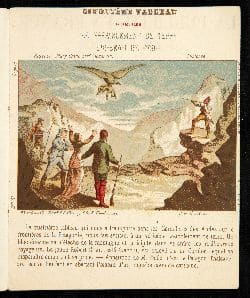
Illustrated programme of In Search of the Castaways
Adaptation for the theatre of Jules Verne’s novel at Porte Saint-Martin theatre.
Porte Saint-Martin theatre, Paris, 1879
MJV H768
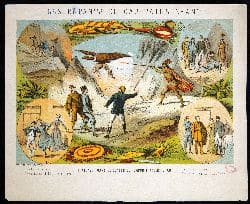
In Search of the Castaways
Éditions Coyen, circa 1880
Chromolithograph on paper
MJV C29
These images were inspired by the theatrical adaptation of Jules Verne’s 1878 novel In Search of the Castaways. The central scene, Thalcave killing the condor that has snatched up Robert Grant occurs in the novel and the play. However, new charcetrs were created for the adaptation, including the couple Bob and Elmina.
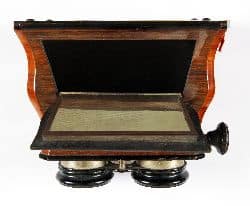
Stereoscopic views of the theatrical adaptation
Michel Strogoff, and stereoscope
Jules Alexandre Marinier, Paris, circa 1885
MJV G369
A stereoscope is an instrument for viewing scenes that provides an impression of depth and relief by merging two slightly different flat images, which are viewed simultaneously and separately by each eye. It is an early version of 3D.
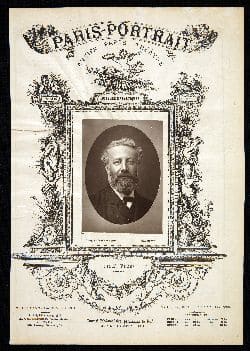
Félix Tournachon aka Nadar
Portrait of Jules Verne
Paris-Théâtre magazine, no.273, 1878
MJV D480
Paris-Théâtre was a weekly magazine devoted to the entertainment world and published from 1873 to 1878, and then, in the same form but titled Paris-Portrait, until 1880.
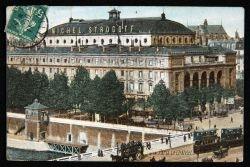
Michel Strogoff at the Théâtre du Châtelet
Postcard, Paris, Late 19th century
MJV CP426
Illustrated programme
The Théâtre du Châtelet’s theatrical season 1899-1900
Imprimerie de la Bourse, Paris, 1899
MJV H807
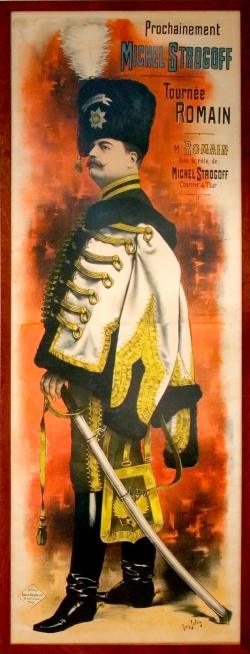
Michel Strogoff
Poster for the theatre adaptation of Jules Verne’s novel
Louis Galice et Cie, Paris, 1901
MJV D903 (purchase with assistance from the Fonds Régional d’Acquisition pour les Bibliothèques, 2017)
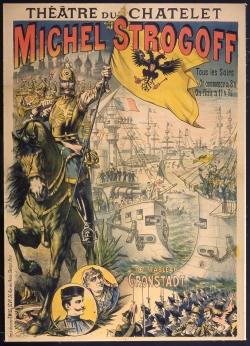
Michel Strogoff
Poster for the adaptation of the novel at the Théâtre du Châtelet
Émile Lévy & Cie, Paris, circa 1891
MJV D192
The success of his novel Michel Strogoff, published in 1876, prompted Jules Verne to adapt the adventure as a stage play. A spectacular military drama that he wrote with Adolphe d’Ennery, with whom he had already adapted Around the World in Eighty Days. It had its premiere on 17 November 1880 at the Théâtre du Châtelet in Paris, lasting from 7:30 in the evening until 2 o’clock in the morning. The play included 16 tableaux, numerous sets, a gypsy ballet and a tartar ballet, 400 extras, 800 costumes, 138 dancers and even a troop of 30 cuirassiers on horseback.
Performed for a full year without interruption, the play ran at the Theâtre du Châtelet until 1939, with a total of 2,502 performances.
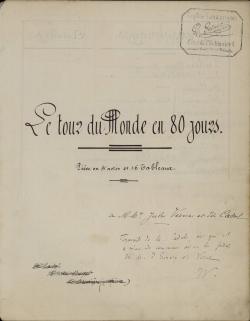
In 1871, Jules Verne started on a theatrical project in collaboration with the playwright Édouard Cadol, but the first version of their play did not appeal to any of the theatre managers they approached. Verne set about writing his novel Around the World in Eighty Days and its publication was a great success. Cadol decided to make changes to the original play but the managers of the Porte Saint-Martin Theatre persuaded Jules Verne and another playwright, Adolphe d’Ennery, to write an adaptation of the novel.
Édouard Cadol, Jules Verne
Around the World in 80 Days, circa 1872
MJV B280 – Exhibition prints (purchased with the support of the Regional Acquisition Fund for Libraries, 2015)
Jules Verne
Around the World in Eighty Days
Éditions Hetzel, Paris, 1874
MJV A416
While the novel’s title has “eighty” written in letters, the number 80 was used for the play and its merchandise.
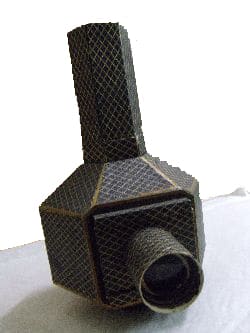
A magic lantern is a device for amplified projection of images painted on glass. It was invented in the 17th century and its use spread in the 18th and 19th centuries. It was named “magic lantern” due to the fascination that its projected images exerted on the public.
Used above all to tell stories, it prefigures the invention of the cinematograph.
The scenes on display were inspired by the play Around the World in 80 Days by Jules Verne and Adolphe d’Ennery.
Magic lantern
20th-century manufacture
Cardboard, paper and glass
MJV G316
Around the World in 80 Days
Glass magic lantern slides
MJV G1
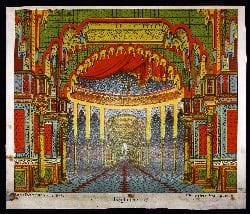
Alfred Jacobsen
Around the World in 80 Days
Copenhagen, 1881-1883
Theatre with chromolithographed sets and characters
MJV G288
Toy theatres are paper and cardboard models that first appeared in England in the early 19th century, echoing the taste for theatregoing that had spread across Europe.
These “miniature theatres” were composed of everything necessary for performing a play: prosceniums, often inspired by real theatres, backdrops and wings, and characters in various positions and costumes enabling them to evolve during the performance.
These sets are from the play Around the World in 80 Days, more specifically the sets for the Palace in India, where several scenes in the plot take place.
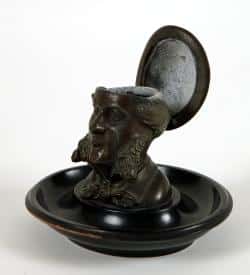
The success of Jules Verne’s play Around the World in 80 Days resulted in substantial production of objects of all kinds. Determined marketing encouraged the sale of such merchandise as Phileas Fogg figurines, board games, cube games, lottos, puzzles, magic-lantern slides and crockery.
Phileas Fogg inkwell
Late 19th century – early 20th century
MJV G3
Phileas Fogg statuette
Late 19th century – early 20th century
MJV G2
Around the World in Eighty Days plates
Earthenware, Creil et Montereau, circa 1880
MJV G8
Beginning in 1844, the Creil et Montereau manufactory produced series of “talking” plates covering a whole range of subjects. In 1880, it created four series of plates depicting 12 episodes from Jules Verne’s novel. The images are decorated with purple, blue, green and black borders. Unlike much such merchandise, the scenes selected by the manufactory all refer to episodes described in the novel.
